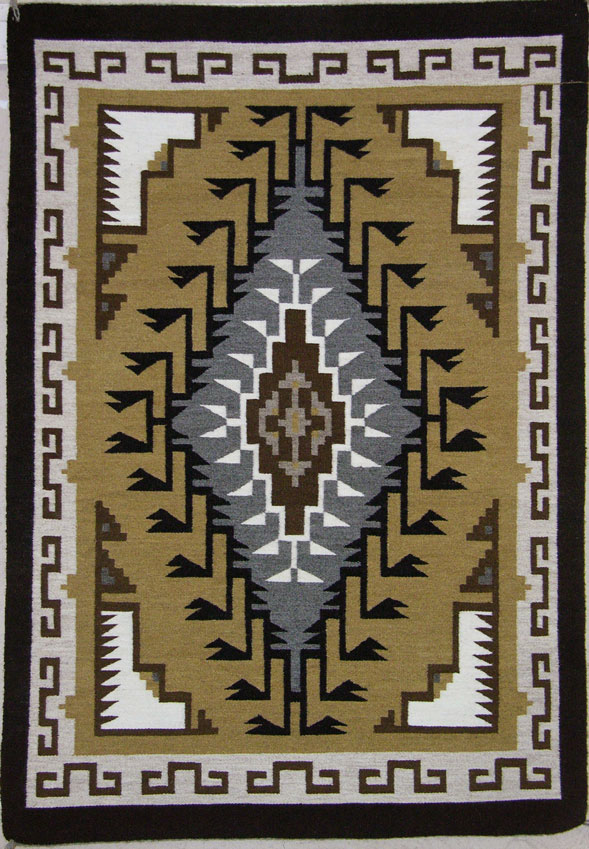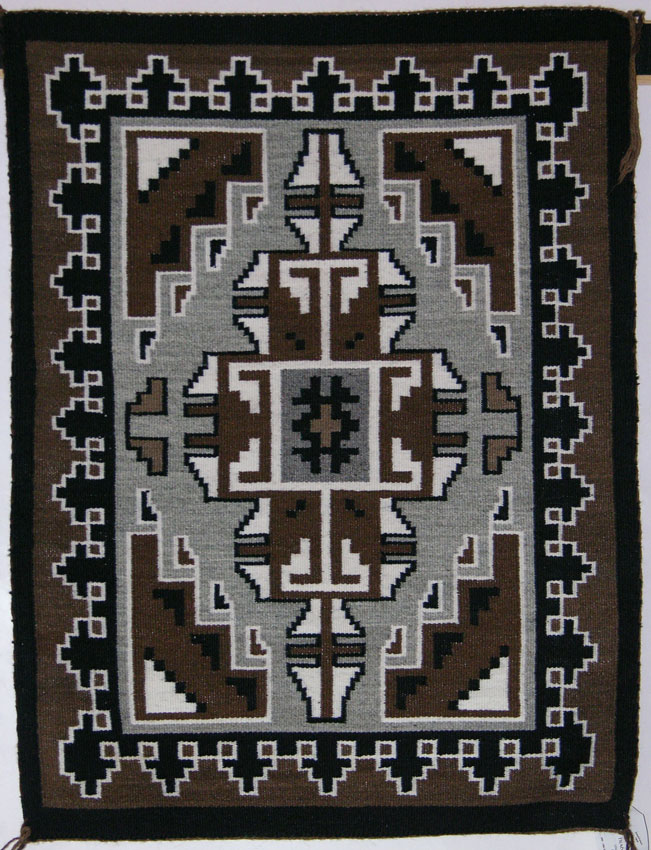Navajo Weaving Culture
In relation to the exhibition of Navajo rugs currently on show at Montclair Art Museum, until 2 January 2021, we revisit an article featured in HALI 202: HALI’s contributing editor Tony Hazledine recounts his travels to New Mexico where, in 2019, he immersed himself in the magic of the land and the Navajo weaving culture, as seen through the eyes of a modern-day rug trader, Mark Winter of Toadlena Trading Post. An abridged version of the article follows.
The Native community of Two Grey Hills/Toadlena has long been renowned for their high-quality rugs, distinguishable by their use of undyed wool giving them a unique palette of greys, browns, and blacks and with a weave of precise and intricate geometric motifs. A stark contrast to the vibrant, colourful rugs presented in ‘Color Riot! How Color Changed Navajo Textiles’.
The first time an image of what will later be called the ‘Storm Pattern’ appears in the catalogue The Navajo, produced in 1903 by J.B. Moore, the enlightened trader who ran the famous Crystal Trading Post high above Toadlena in the Chuska Mountains. Moore was highly influential in the late 19th and early 20th century in encouraging the Navajo to move away from blanket weaving to the production of floor rugs which could then be sold via catalogue and shipped by the new railways to a much wider public, especially in the east. He introduced new designs, often drawing on straight copies of oriental rugs, especially Caucasian models with ‘Shirvan Navajos’ being particularly popular. Moore was also decades ahead of his time in naming the individual weaver of a rug in his catalogue, a tradition that Mark Winter carries on at Toadlena.
Winter’s tenth exhibition, The Navajo Storm Pattern was held in his utterly unique and atmospheric gallery at the Toadlena Trading Post. The ‘Storm Pattern’ is one of the best known and most dynamic Navajo rug designs and Winter, with his usual painstaking research, explains the history and meaning of the design elements in ‘The Eye on the Storm’ the excellent booklet which accompanied the exhibition. He has meticulously researched the family histories of many of the weavers and even tracked down some of the original rugs made by their forebears. The results of his decades of research can be found in The Master Weavers: Celebrating 100 Years of Navajo Textile Artists an unparalleled study of a 20th-century weaving culture from the Toadlena/Two Grey Hills Weaving Region.
The Toadlena Trading Post continues to operate directly with the weavers in the same way trading posts have since the 1870s with the primary purpose of inspiring future generations of Navajo weaving excellence.
Read the full article in HALI 202, or subscribe to access the full digital HALI Archive.





























Comments [0] Sign in to comment